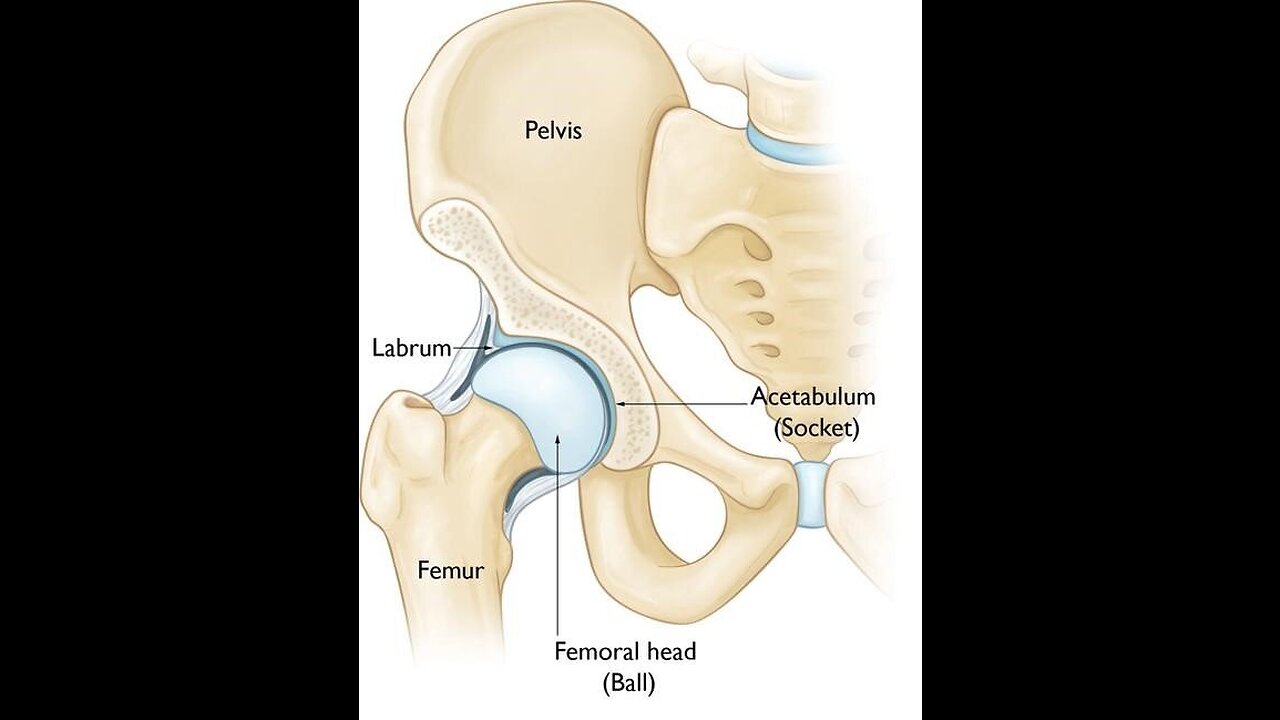Premium Only Content

"Unlocking Mobility: Exploring the Anatomy and Health of the Hip Joint"
The procedure for hip joint surgery, often referred to as a hip replacement surgery or hip arthroplasty, involves several key steps:
1. **Preoperative Assessment:** The patient undergoes a thorough medical evaluation, including physical examinations and imaging tests like X-rays or MRI, to determine the extent of damage to the hip joint and to assess the patient's overall health.
2. **Anesthesia:** The patient is given anesthesia to ensure they are pain-free and comfortable during the surgery. This can be general anesthesia or regional anesthesia.
3. **Incision:** A surgical incision is made on the side or back of the hip, allowing access to the hip joint.
4. **Joint Access:** The surgeon carefully moves muscles and other tissues to expose the hip joint while minimizing damage to surrounding structures.
5. **Hip Resurfacing or Replacement:** Depending on the extent of damage, the surgeon may perform a hip resurfacing (where damaged bone and cartilage are removed and replaced with metal components) or a total hip replacement (where the ball-and-socket components of the hip joint are replaced with artificial implants).
6. **Implant Placement:** The surgeon positions the artificial components precisely within the hip joint, ensuring stability and proper alignment.
7. **Closure:** Once the implants are in place, the surgeon closes the incision using sutures or staples.
8. **Recovery and Rehabilitation:** The patient is moved to a recovery area and closely monitored as they wake up from anesthesia. Post-operative care includes pain management, physical therapy, and gradual weight-bearing exercises to promote healing and regain mobility.
9. **Hospital Stay:** Depending on the patient's condition and the type of surgery, they might spend a few days in the hospital for recovery and rehabilitation.
10. **Follow-up Care:** After discharge, the patient will have scheduled follow-up appointments to monitor the healing progress, address any concerns, and adjust the rehabilitation plan as needed.
It's important to note that the specific details of the procedure can vary based on the patient's individual condition, the surgeon's approach, and the type of implants used. Additionally, advancements in surgical techniques, anesthesia, and rehabilitation practices have led to variations in the procedure over time. Always follow the instructions and guidance provided by your medical team for the best possible outcome.
-
 2:08:53
2:08:53
vivafrei
21 hours agoEp. 252: Liberals DISQUALIFY Candidate from Race! DOGE Wins & Loses; Rumble Sues BRAZIL! & MORE!
148K253 -
 1:15:12
1:15:12
Josh Pate's College Football Show
11 hours ago $21.27 earnedCFB’s Top 12 Programs | TV Executives & Our Sport | USC Changes Coming | Early Championship Picks
88.1K3 -
 LIVE
LIVE
Vigilant News Network
16 hours agoUK Government BUSTED in Secret Plot to Extract Your Data | Media Blackout
1,636 watching -
 1:03:32
1:03:32
Winston Marshall
3 days ago"War On Children!" The DEMISE Of The West Starts With Schools - Katharine Birbalsingh
123K67 -
 48:02
48:02
Survive History
18 hours ago $8.75 earnedCould You Survive as a Sharpshooter in the Napoleonic Wars?
72.7K3 -
 12:03
12:03
Space Ice
19 hours agoSteven Seagal's China Salesman - Mike Tyson Knocks Him Out - Worst Movie Ever
54K19 -
 11:37
11:37
Degenerate Jay
19 hours ago $19.35 earnedJames Bond Needs Quality Over Quantity From Amazon
120K13 -
 15:23
15:23
Misha Petrov
19 hours agoTrad Wives & Girl Bosses Go to WAR!
87.2K52 -
 2:03:11
2:03:11
TheDozenPodcast
17 hours agoFootball villain fighting the state: Joey Barton
66.4K1 -
 13:18:50
13:18:50
Scottish Viking Gaming
20 hours ago💚Rumble :|: Sunday Funday :|: Smash the Blerps and Vape the Terpes
101K8